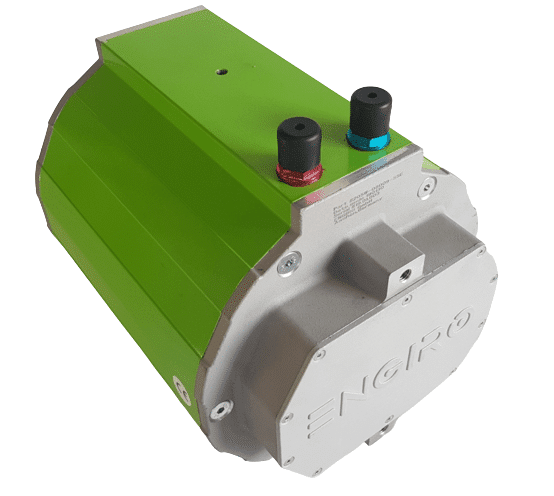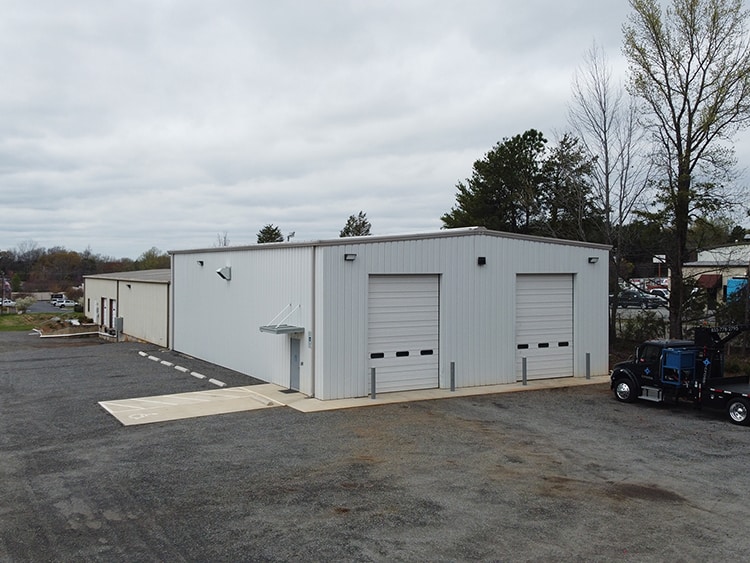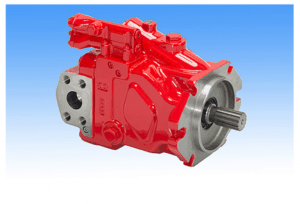Electric Motors For Mobile Machinery
Industrial Electric Motors
An electric motor is an electromechanical device able to convert electrical energy into mechanical energy that is then used to power equipment. They may be powered by either direct electrical connection (through shore power) or in the form of stored energy (through a battery or batteries). They create a magnetic field to produce rotational force, which is then used to drive a shaft, which in turn drives equipment or other machine components.
While many think of electric motors as the domain of cars or other small electronics, the industrial electric motor is being rapidly adopted by the industrial world. And in particular, by mobile machinery manufacturers and work vehicle OEMs.
There are a variety of reasons for this shift away from the traditional internal combustion engine common in mobile hydraulic and heavy machinery. Whether it’s to meet external mandates, internal emissions goals, or the needs of specific end users, many industrial vehicle manufacturers are making the switch. And at Cross, our goal is to make that transition as easy as possible.
Finding the Right Motor
Selecting the right electric motor for your application can be a challenge. As multiple motor design options can work for a specific application, it’s important to choose the right motor for the job to ensure the best performance of your machine. From brushed DC motors to Synchronous Reluctance motors, there are a variety of options to choose from.
Luckily, there’s a team of experts who can help. The team at Cross has experience implementing a range of electric motors into a variety of applications and our selection includes products from industry leading manufacturers. That way, you know you can trust your machine performance.
Contact our team today to discuss your electric motor needs and production requirements. We have the skill and expertise to help you find the right motor for your unique machine and manufacturing needs.

Cross Electric Motor Products
We’re constantly working to provide efficient and innovative solutions and products to all our OEM and vehicle manufacturer customers. Whether that’s in the form of a new electric motor or installing an idle reduction system, we can help.
We’ve worked with countless manufacturers across dozens of industries. And over the years, we’ve gathered the knowledge and experience to retrofit, prototype, or optimize your mobile machine.
Our reputation for customer service is only surpassed by the quality of our work. When it comes to industrial mobile systems, we can confidently say we know our stuff. And we’re confident that after working with the Cross Mobile Systems Integration team, you’ll think so too.
When you work with Cross, you know you’re getting quality work from experienced experts with access to some of the most well-respected brands in the industry.
If this sounds appealing to you, then Cross may be a good fit for you, your company, and your vehicle manufacturing process.
Brushed DC motors are the most common and cost-effective style of electric motor. In a brushed DC motor, direct current from the battery is sent to the rotor armature through spring loaded brushes made of carbon that energize rotating contacts which are connected to the rotor windings.
Induction motors are the most common type of motor used in industrial applications where AC power is easily available. This motor requires 3-phase AC power to operate and can be connected directly to a 3-phase AC source to run at a single speed. When plugging into a DC power supply such as a battery, an inverter must be used to invert DC power into 3-phase AC power.
Contact Cross Company About Asynchronous Induction Motors (ASIM, IM) →
PM Motors are constructed similarly to a brushed DC motor, however instead of the coils being on the rotor, they are located in the stator. These are also commonly called Brushless DC motors. PM motors electrically switch the current going through the windings to generate a rotating magnetic field. Since the motor is switched electrically, there must be a mechanism to sense the rotor position to ensure the windings are energized at the correct time. So a rotational position sensor is typically used with varying speed PMAC operation, usually a sin-cos sensor or discrete encoder.
Contact Cross Company About Permanent Magnet AC (PM, PMAC, BLDC) →
These motors work similarly to a PMAC however require significantly less rare-earth materials. In a PMAC motor, the windings generate a magnetic field which interacts with permanent magnets located in the rotor. Reluctance motors use a material with low reluctance (resistance to magnetic field) like iron laminations which become temporary magnets when placed in a magnetic field. Like placing an iron nail on a permanent magnet, the iron nail will align itself with the magnetic field of the PM.
Contact Cross Company About Synchronous Reluctance motor (SynRM, RSM) →
Electric Motor Industrial Applications
There are many applications within the industrial space for AC and DC electric motors. Some of the most common include using the motor to power alternators, compressors, pumps, and other machine tools. However, there are many other benefits to adopting an electric motor-based system for your mobile work machinery.
Other advantages of electric motors for work vehicles include lower primary costs (when compared to a diesel engine), less moving parts (thus less maintenance and maintenance-related downtime), increased efficiency, and the elimination of fuel costs. These are just some of the reasons many equipment manufacturers are seeing an increasing demand for hybrid or full-electric work vehicles.
When it comes to production, manufacturing mobile vehicles that meet the demands of mandates and the requests of end users and fleet managers is becoming more and more appealing. At Cross, we can work with you as an extension of your engineering team to ensure that you have the right electric motor for your industrial vehicle production process and your end users.
Heavy Equipment
Electric motors are able to provide the power needed for your heavy equipment
Onboard Systems
Control the systems of your work vehicle like HVAC, pumps, and lights
Day-to-Day Operations
Most day-to-day operations performed can be controlled by electric motors
Meeting Changing Demands
As commercial markets begin to shift more in the direction of sustainable energy and emission reduction, it’s crucial that the industrial world be able to keep up. Even if these changes aren’t mandated now, it’s undeniable that more and more manufacturers are pivoting to meet the growing demand for sustainable industrial practices.
Other than the many benefits to machine operation electric motors provide, OEMs must also consider the competitive advantage afforded to manufacturers who make the switch to electric. Adopting electric technology for mobile machinery can be the factor that sets your production process apart from your competitors.
Start the process today with the help of an expert. Set yourself up for success now and in the future with Cross Mobile Systems Integration electrification.
Construction
Recycling
Utility Vehicles and Work Trucks
Frequently Asked Questions
A very sizable portion of industrial motors for mobile machinery tend to be brushed DC motors. In a brushed DC motor, direct current is sent directly from the battery to the rotor. These motors are efficient and less expensive than many other common types of industrial electric motors for work vehicles.
In general, AC motors are considered to be more “powerful” than a DC motor. This is due to their ability to generate higher torque through a stronger current. However, when it comes to efficiency, DC motors are regarded as making better use of their input energy. Ultimately it depends on the specific application.
There are few industries we’ve encountered that don’t stand to benefit in some way from the adoption of electric motors over the traditional internal combustion engines. Some examples include electric motors for utility vehicles, recycling machinery electric motors, municipal truck electric motors, and many others.
The Electric Motor Company You Need
At Cross, we offer much more than just top-quality mobile machine parts and electrification services. We provide the experience and expertise our OEM and other equipment manufacturer partners need to succeed.

Why Cross Electric Motors?
At Cross, we work directly with all of our customers to create solutions that meet their needs and the needs of their end-users. Our team of hydraulic system experts are well-versed in the requirements of a wide range of industries.
Contact a Cross Mobile Systems Integration expert to discuss which electric motor might be best for your application. Our experts can work with your team to develop a complete mobile vehicle solution.
That way, you know you’ve got the right equipment working together to improve the performance of your machine. Down to the electric motor.

